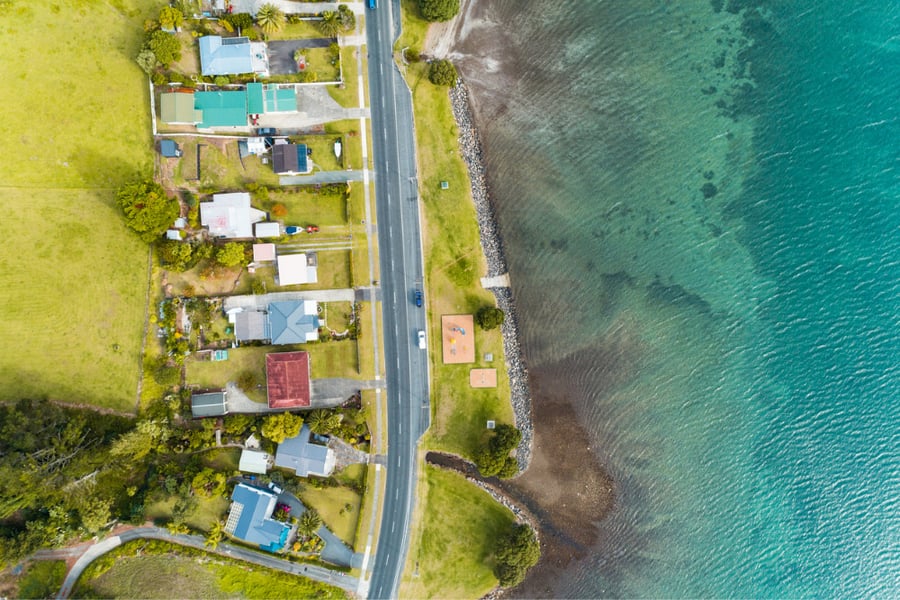Rising ocean levels make long-term debt increasingly risky in many parts of the country

With COVID-19 still very much a concern in the U.S. – multiple states are establishing new daily records of infections, another 1.5 million unemployment insurance claims were reported last week – the other global crisis that threatens both humanity and the economy, global warming, has become even less of a priority than it had been before coronavirus chased it from the headlines. (Well, page three maybe.)
But lenders in areas assumed to be facing the highest chance of flooding due to rising sea levels are already factoring risks associated with global warming into their business models, and it’s making 30-year mortgages in these areas increasingly unattractive for borrowers.
Recent reporting by the New York Times explains that some banks are asking borrowers in coastal areas to drastically increase their down payments, in some cases to as high as 40 percent. Banks are also selling their mortgages on coastal properties to Fannie Mae and Freddie Mac at higher rates than previously seen. According to the Baltimore Sun, local banks offloaded 43 percent of their vulnerable-zone mortgages in 2009. By 2017, that share had increased to 57 percent. Who better than a local lender to know the local flood risks?
From a lender perspective, reducing demand for risky debt is a no-brainer. According to Climate Central, half a million existing homes – worth an estimated $241 billion – will be on land that floods at least once a year by 2050. Discouraging borrowers from targeting these properties is simple risk-aversion.
But how far is too far?
According to Michael Berman, former chairman of the Mortgage Banker’s Association, lenders may wind up “blue-lining” entire regions where flood risks are high. That reluctance to lend, combined with an unwillingness among insurance companies to cover losses related to inevitable floods, could destroy coastal housing values. Former Freddie Mac chief economist Sean Becketti warned in 2016 that losses from flooding are “likely to be greater than those experienced in the housing crisis and the Great Recession.” Unlike the 2008 meltdown, however, “homeowners will have no expectation that the values of their homes will ever recover,” Becketti said.
Propping up demand for these threatened properties is access to interest-only loans. An interest-only loan would be an awful choice for a homeowner looking to leverage equity, but for someone who knows their home is going to be rendered unliveable in a matter of years, going interest-only allows them to temporarily live in a beautiful location and walk away from their mortgage without destroying themselves financially.
Recent research found that since the housing crash, the share of homes with fixed-rate 30-year mortgages has fallen sharply in areas most affected by storm surges (down to less than 80 percent as of 2016), while remaining constant (around 90 percent) in the rest of the country. The difference is at least partially explained by a rise in interest-only loans. Over 10 percent of homeowners in higher-risk areas had interest-only loans in 2016 versus 2.3 percent of borrowers in other regions.
The easy exit provided by interest-only mortgages is more of a tie than a win for coastal homeowners, but it will help many of them purchase homes for their families, at least temporarily, at a time of painfully tight supply. But these properties are on a slow, steady march to worthlessness, and their buyers are literally putting themselves in harm’s way.
How many owners can conceivably walk away from a flood-damaged coastal property, especially one that is likely to face intensifying damage each year, before it becomes completely unsellable? One? Two? What is America’s coastline even going to look like after another 20 or 30 years of barely mitigated global warming?
People are highly skilled at trapping themselves in cycles, and coastal property ownership circa 2020 is a fine example. Owning a home by the ocean is a dream shared by millions of Americans, but the behaviors that make fulfilling that dream a reality – endless production, endless consumption, endless pollution – are also, by heating the oceans and bringing up sea levels, working to make it impossible.
This particular cycle will be broken soon enough, though, and it won’t be by choice.



